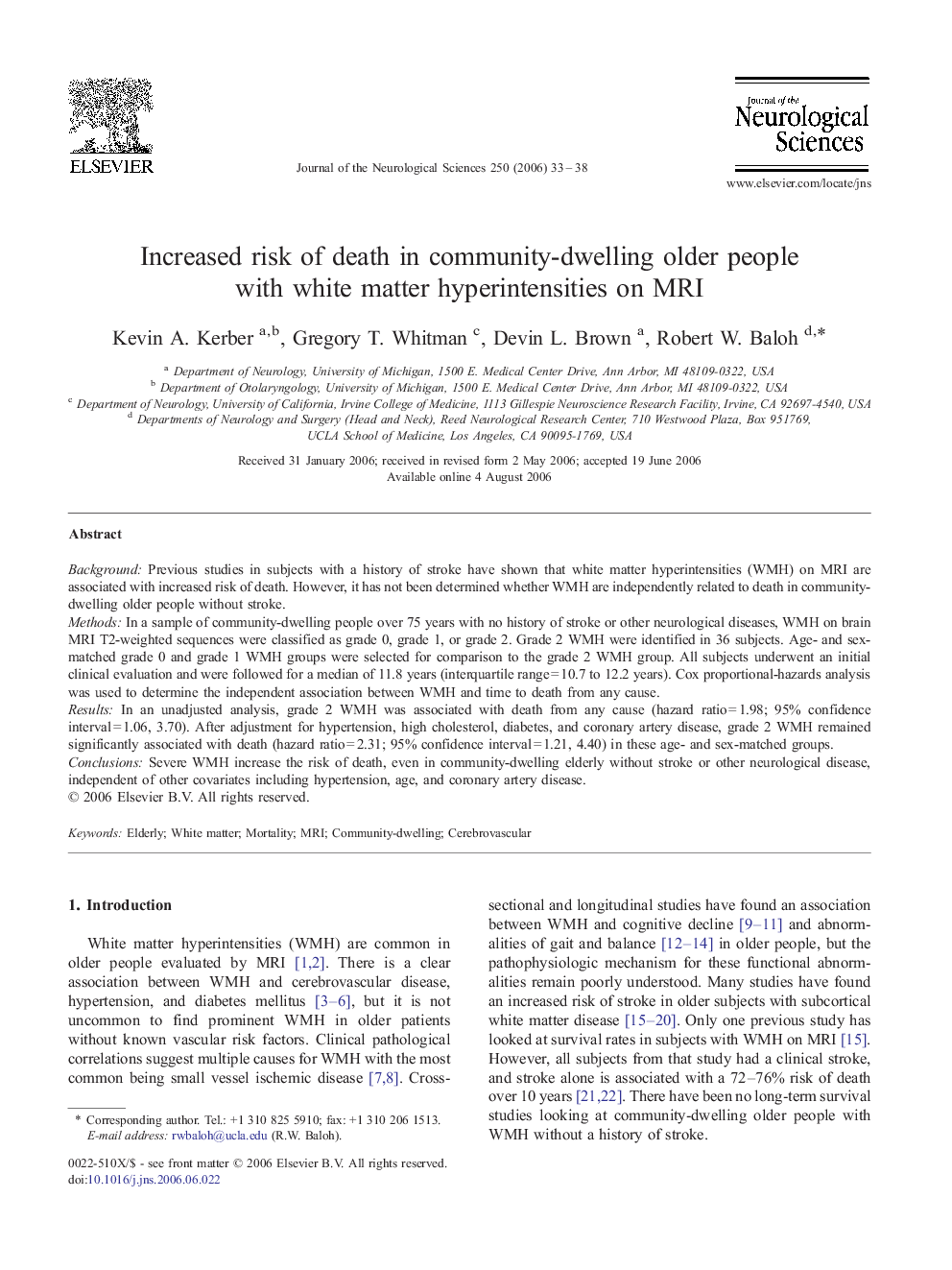| Article ID | Journal | Published Year | Pages | File Type |
|---|---|---|---|---|
| 1916496 | Journal of the Neurological Sciences | 2006 | 6 Pages |
BackgroundPrevious studies in subjects with a history of stroke have shown that white matter hyperintensities (WMH) on MRI are associated with increased risk of death. However, it has not been determined whether WMH are independently related to death in community-dwelling older people without stroke.MethodsIn a sample of community-dwelling people over 75 years with no history of stroke or other neurological diseases, WMH on brain MRI T2-weighted sequences were classified as grade 0, grade 1, or grade 2. Grade 2 WMH were identified in 36 subjects. Age- and sex-matched grade 0 and grade 1 WMH groups were selected for comparison to the grade 2 WMH group. All subjects underwent an initial clinical evaluation and were followed for a median of 11.8 years (interquartile range = 10.7 to 12.2 years). Cox proportional-hazards analysis was used to determine the independent association between WMH and time to death from any cause.ResultsIn an unadjusted analysis, grade 2 WMH was associated with death from any cause (hazard ratio = 1.98; 95% confidence interval = 1.06, 3.70). After adjustment for hypertension, high cholesterol, diabetes, and coronary artery disease, grade 2 WMH remained significantly associated with death (hazard ratio = 2.31; 95% confidence interval = 1.21, 4.40) in these age- and sex-matched groups.ConclusionsSevere WMH increase the risk of death, even in community-dwelling elderly without stroke or other neurological disease, independent of other covariates including hypertension, age, and coronary artery disease.
